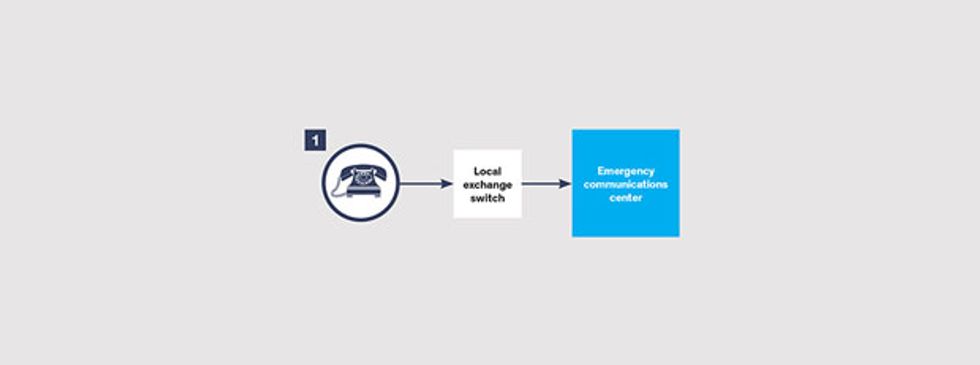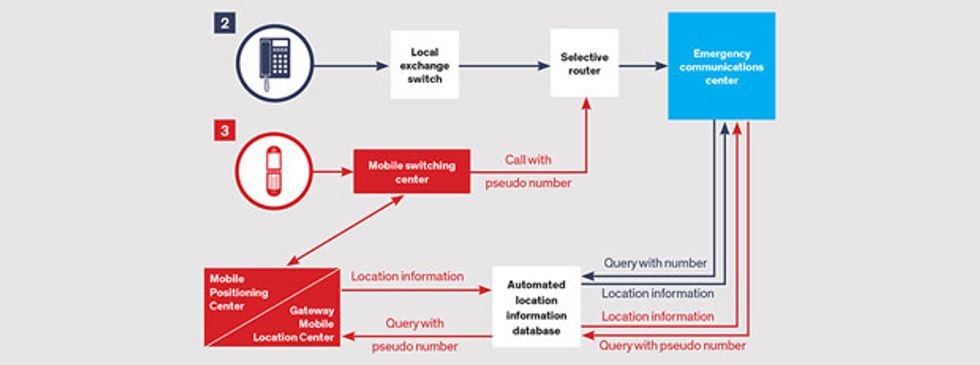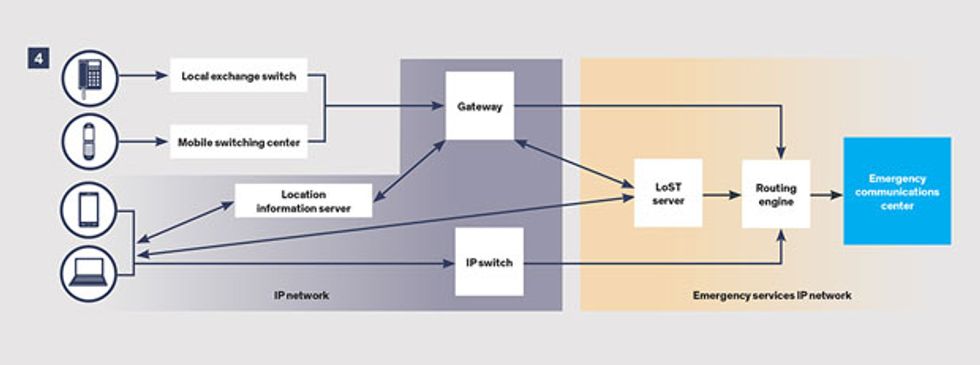How to Design 911 for the 21st Century
Making emergency services work with wireless and Internet distress calls

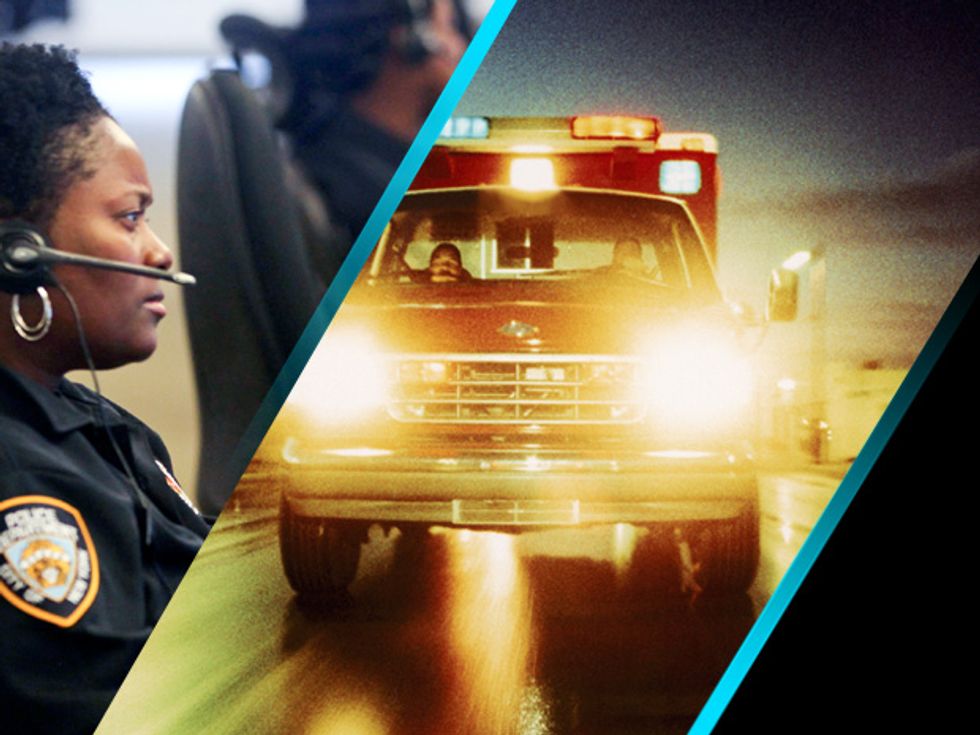
No matter how smart your phone may be, your Mayday call likely relies on an ancient 2400-baud modem to tell emergency responders what they most need to know—your location. And as phone technology advances, the problem is getting worse.
An elementary school in Illinois found this out the hard way when a school official called 911 to report that two kindergartners had wandered off. The call went to an emergency communications center in Canada, delaying the response by several minutes. The children were eventually found, but the delay could have made a deadly difference in other circumstances.
Engineers have installed a patchwork of updates to try to keep pace with calling technology, but they’ve reached their limit. It’s time to rebuild the system from the ground up—and that’s exactly what’s happening in the United States and in many other places around the world.
Governments, network operators, and technology developers are building emergency calling systems based on the Internet Protocol. These systems will route emergency calls in an entirely new way, expand the service to include video and text, and reduce the cost of operations. This modernization is happening in a consistent way everywhere, which means that emergency calling will work for users who take their devices with them as they travel. And by creating a global market for emergency response equipment, standardization is lowering the cost of the systems.
In the United States, where the emergency number is 911, the National Emergency Number Association is leading the effort with its NG911 project; the European Emergency Number Association is leading a corresponding NG112 effort. National regulators and local standards organizations in South America and Asia are interested but not as far along.
To understand the benefits such systems can provide, it helps to take a look back at how we arrived at the hodgepodge we have today. We’ll use the U.S. 911 system as an example.
The 911 service originated in the 1960s, when most phones were connected to the telephone network by copper wires and were installed and served by the same company—AT&T. There were relatively few phone lines, so it was easy for an emergency call taker to look up a number in a book to find the correlated street address. Each local telephone exchange had a set of lines connecting it to an emergency communications center, officially called a Public Safety Answering Point, where call takers routed each call to the dispatcher for the appropriate response agency: fire, ambulance, or police.
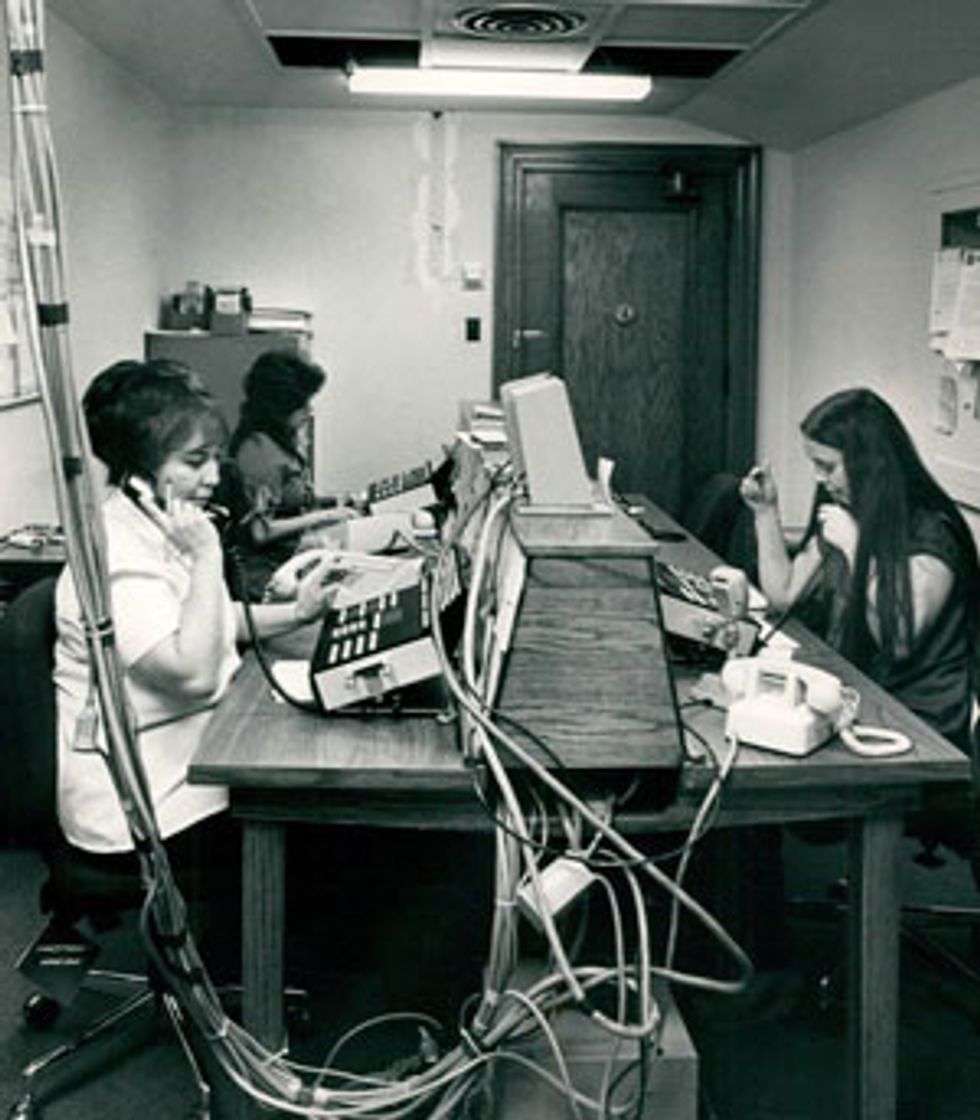
In the original system, all 911 calls arriving at a telephone exchange would go to the same place. A telephone exchange that received a call to the number 911 would automatically route it to the connected emergency communications center. But because emergency services were provided by local governments whose jurisdictions often did not coincide with areas covered by the centers, emergency responders had to cobble together cooperation agreements between emergency services agencies to reroute calls properly.
A more organized and reliable fix came in the 1980s, in the form of Enhanced 911, or E911, which is still in use today. This standard employs an automated digital information service that makes it unnecessary to look in directories for numbers and makes it possible for telephone exchanges to route different calls to different emergency communications centers.
With E911, instead of going to a directly connected emergency communications center, calls to 911 go to a designated telephone switch called a selective router. Each selective router serves a number of telephone exchanges and directly connects to the centers in the region. The selective router has a database with an entry for each telephone number that specifies which center should receive the call. This extra intelligence allows the selective router to connect a call to the proper center based on the caller’s actual location, not just the exchange the caller is connected to.
When the call reaches the correct emergency communications center, the computer there queries an off-site database, using a 2400-baud modem. This database lists the street address for each telephone number, the name of the subscriber, the identity of the carrier serving the subscriber, and the class of service—for example, residential, business, or pay phone.
Just as emergency responders got used to getting all this information, however, the appearance of mobile phones plunged them back into darkness. Mobile phones violate all the assumptions about the wired phones on which E911 relies. For one thing, mobile phone users roam the world, so a caller’s phone number no longer reliably indicates the caller’s location or the appropriate set of responders. Mobile phone users were shocked to discover that unless they could verbally tell emergency call takers where they were, a 911 call often led to a lengthy delay while responders searched for the person needing help.
It’s not only the routing problem that made it hard to connect mobile phone calls to the system: The means of describing the location was also at fault. Until the early 21st century, emergency communications centers found callers by street address; they didn’t have a way to handle the latitude and longitude coordinates they received from mobile networks. It’s better today: Only a few percent of emergency communications centers still can’t map a caller’s location with that information. Still, some methods for locating wireless callers can get responders to only within 100 meters of the caller; known addresses associated with wired phones are obviously better than that. And when the network has to rely on information from cell towers, it can sometimes locate the caller to only within a few kilometers.
Upgrading E911 to support mobile phones requires that each mobile phone company operate a new type of information service, usually called a Mobile Positioning Center or Gateway Mobile Location Center. These services make the location information databases used by emergency responders more dynamic. Instead of storing a fixed location for each phone number, the systems query the network or the device in real time.
It works like this: The switching center for the mobile network connects to a selective router that deliberately lies about the caller’s number in order to get the location to come out right. It provides a pseudo number from a set of numbers appropriate for the geographic area around the caller’s current location. That way the call goes to the right responders.
At the emergency communications center, the database flags the call as coming from a pseudo number and identifies the Mobile Positioning Center or Gateway Mobile Location Center that assigned it. The system then sends the query along to the correct positioning center or location center, which tries to figure out the cellphone’s location by collecting its GPS coordinates or calculating its location by comparing the strength of the signals coming from several points—that is, by triangulation. If the system can’t do that, say, because the GPS signals are blocked, or too few towers are able to measure signals from the phone to provide coordinates for triangulation, it instead sends the street address of the cell tower. That, however, may not be particularly useful, because the caller could be several kilometers away.
Outside of the United States, caller information systems vary dramatically. In Japan, callers can request that their locations be suppressed for privacy reasons. In some countries, like Austria, the phone companies can locate callers, but call takers at communications centers might have to make a special phone call or send a fax to get the information. Many countries in the European Union can identify only the serving cell tower, although very recent EU regulations will force operators of mobile systems to upgrade to more accurate location determination systems. And in some parts of the world, emergency calls are still simply normal calls to the local police station.
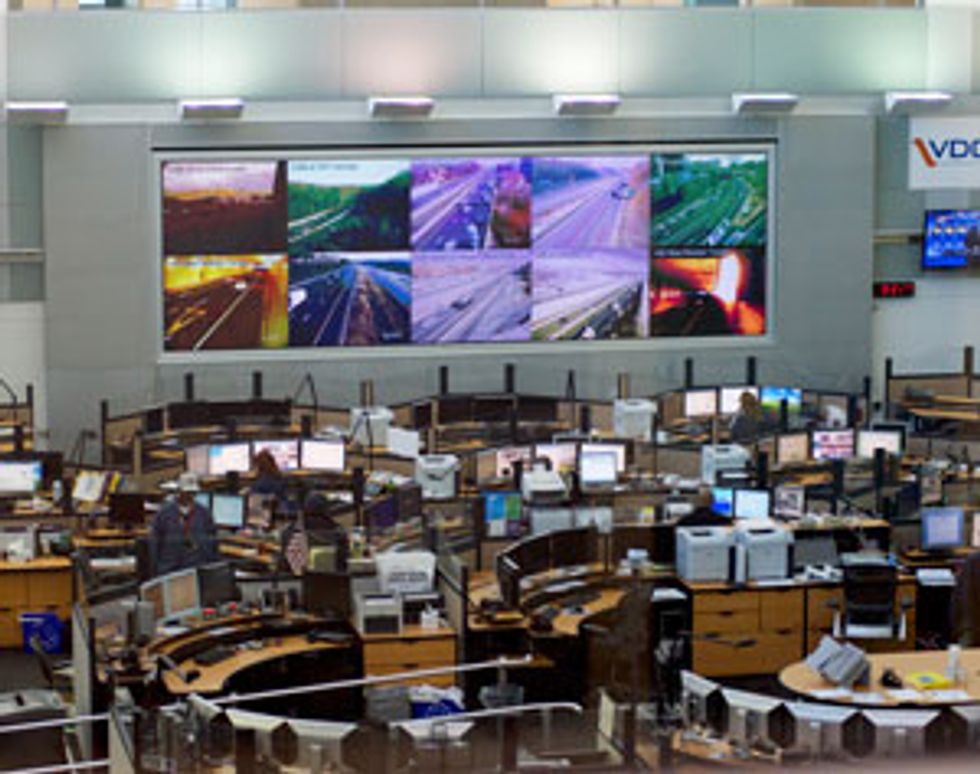
Around the year 2000, most emergency communications systems were able to locate mobile callers reasonably well; then voice over IP (VoIP) technology, introduced by companies such as Vonage and Skype, set them a giant step back. A VoIP service knows only callers’ IP addresses, not their locations. And regulators didn’t initially require VoIP services to support emergency calling.
But regulatory pressure eventually forced emergency authorities and VoIP companies to hack VoIP 911 calls into the E911 system. They followed the approach used for mobile phones: A VoIP Positioning Center for a VoIP provider, like a Mobile Positioning Center for a cell-service provider, creates a pseudo number with corresponding location information. However, the only location a VoIP number has is one that the user has manually registered. So if a user takes a Vonage device from New York to Seattle and forgets to update its registered location, 911 calls will still go to New York. And people do forget. In some cases, American callers in the United Kingdom have reached U.S. emergency communications centers because they had brought their devices abroad.
The fixes that allow emergency dispatch systems to get some kind of location information from mobile and Internet calls can still cause delays. For mobile calls in the United States, about one call in a thousand suffers from these delays. For Internet calls, the rate is at least several percentage points, possibly much higher. If you’re in that unfortunate fraction, the 20 extra minutes it takes to find you can be huge.
But this is the best that today’s 911 system can do. And as bad as that system is at extending location services to mobile phones and Internet phones, it is worse still at accommodating even newer services like text, video, social networking, and Web-based calling.
The circuit-based nature of the 911 system also makes it easy to knock an emergency communications center off-line. Because the number of physical lines that go into a center is typically small, it can take only a few calls to overwhelm many of today’s centers. Because there is no automatic way to reroute calls to other centers, an attacker with a few phones can deny emergency services to an entire area.
The only way to fix this mess is to replace the whole system and start with a clean slate. And that’s what’s happening, with a redesign of emergency calling known in the United States as Next Generation 911 (NG911) and in Europe as NG112.
The core of NG911 is the Emergency Services IP Network, or ESInet. This network uses the standard Session Initiation Protocol, common in VoIP services and 4G mobile networks, to define the data messages that must be sent to begin and end calls, along with data to initiate other calling features, like Caller ID and call forwarding.
Because the dialing string that starts an emergency call, like 911, varies by country, the Internet Engineering Task Force, which develops standards for the Internet, has defined a standard emergency marking that goes in the message that starts the call. The marking can be recognized by all systems in the call path, even those outside of the country in which the call is being made. It therefore doesn’t matter whether 911, 112, or some other series of local emergency digits were actually dialed.
Remember that E911 was designed around wire-line networks, and mobile and VoIP callers had to be adapted to fit into the wire-line model. NG911 reverses that approach—VoIP and 4G mobile calls go straight through, and it’s the wire-line and older wireless calls that have to adapt. A gateway converts them so that they can use the Session Initiation Protocol.
This reversal simplifies the path of VoIP and 4G calls, but a fundamental challenge for VoIP calls remains. Delivering a VoIP call requires two types of networks, each of which is missing a key piece of information needed to route an emergency call. The first type of network is an “origination network,” which delivers the call over the Internet—think Skype or Vonage. An origination network “knows” that it’s delivering an emergency call but doesn’t know where the caller is, only the caller’s IP address. The second type of network is an “access network,” which routes IP packets over wires or antennas—think Comcast or Verizon. The access network usually knows where the caller is, but it can’t tell that there’s an emergency because emergency-call packets look the same as any other packets. In fact, because many calls are encrypted to protect the user’s privacy, the origination network may not even know that the packets are part of a call at all (as opposed to, say, Web browsing or online gaming packets).
So there’s a need for some entity involved in an emergency call to contact the access network and fetch the caller’s location. The calling device itself is in the best position to do this. Because it is connected to both the access network and the origination network, it can query the access network to get its own location and then send that location data through the origination network to the emergency communications center as part of the data that signals the start of a call.
That’s how the NG911 system figures out where a caller is. The next step is to route the call.
The calling device or the origination network obtains the caller’s location from the access network and sends it to a local server based on the Location-to-Service Translation (LoST) protocol, defined by the Internet Engineering Task Force in 2008. The LoST servers have maps of emergency communications center coverage areas. These LoST servers provide a much more flexible routing system than the selective routers they replace. That greater flexibility translates into increased reliability as well. If a given center is overloaded, the LoST servers can steer new calls away, to a backup center. In extreme emergencies that overwhelm huge regions—say, a hurricane—LoST can route calls anywhere in the country. The call taker in a distant center can see the same map that a local call taker would see and dispatch the call the same way the local center would.
With this new system, in which every call—landline, mobile, or Internet—travels through the network according to the Internet Protocol, calls can contain any mix of voice, video, and text media as long as the calling device supports it. These rich media can allow a call taker to better assess an emergency situation through photos or video. The new standards also allow emergency communications centers to get previously unavailable information, like device-specific data (such as the status of a rollover sensor from an in-car calling system like OnStar). The NG911 design includes extensive support for persons with disabilities, including the ability to establish a three-way call, for example, that includes a deaf caller, the call taker, and a sign-language interpreter.
The NG911 system will eventually be able to transmit medical history data to emergency medical technicians or even to specially trained call takers who coach callers in first aid. It will allow emergency communications centers to tap into information about buildings, such as floor plans, elevator status, and storage sites of hazardous materials. It will be able to notify parents if their children call 911, or add parents to the call.
NG911 also includes mechanisms to ensure the security and resiliency of emergency services. Because NG911 operates over an IP network, designers of emergency networks can build upon the comprehensive Internet security tools that already exist. Even if a disaster or a deliberate attack should overload an emergency communications center, with NG911 other centers can step in to help.
Evolution of 911
Most of these benefits, however, lie in the future. A few states have installed NG911 systems that use IP networks and the NG911 call-routing mechanisms, but these systems have enabled just a few of the new features that NG911 provides, mainly more flexible routing of calls. Systems that are capable of taking advantage of more new features should be available within the next year or two.
The technical challenges of migrating to NG911 are daunting: Because emergency communications centers, calling networks, and IP networks will all be making upgrades independently, as their schedules and funding allow, it will be necessary to operate legacy and next-generation services side by side for several years to come.
There are also legal and financial challenges. The regulations that have governed emergency calling for the past several years are largely predicated on the idea that telephone companies, not Internet companies, are the entities that connect emergency calls. So it is likely that many regulations or statutes, across many jurisdictions, will have to be adapted. It’s not always clear which service providers should have to support emergency calling; while with hindsight, it’s obvious now that mobile and VoIP services must do this, it wasn’t so obvious when those services began. It’s important to balance the need for emergency communications with the need to keep Internet communications technologies flexible and open to innovation.
Now that text-to-911 is coming, should stand-alone messaging systems like Facebook’s or Google’s be required to support emergency messaging? When you can click to dial a video connection through an app like Skype or even a browser, should these services be required to support emergency calling? Regulators do not require Internet service providers to provide emergency services with the locations of their customers, but they will need to in order to allow many Internet applications to provide emergency communications. Will a hotel that operates a Wi-Fi network also be required to run a location server?
The initial wave of NG911 upgrades currently in progress will be largely invisible to the consumer. The upgrades focus on creating the emergency services network, installing the servers that route the calls, and connecting the emergency communications centers.
Once most 911 calls travel over the Internet, consumers will begin to see visible changes. They’ll be able to add pictures or video to their emergency calls. They’ll be able to request that they be added to an emergency call when a child or elderly parent calls 911. When physical wires no longer limit the routing of emergency calls, emergency responders will be able to create far more efficient, reliable, and adaptable systems for use in disaster response.
And if the standard is widely adopted around the world, as we anticipate it will be, we will have a single, uniform way of placing an emergency call. All these benefits mean that more lives will be saved. And that, of course, is the point of emergency services.
About the Author
Richard Barnes, a security engineer at Mozilla, and Brian Rosen, a systems architect at Neustar, both work on technical standards for emergency 911 systems. Barnes once used a cellphone to dial 112 (the European emergency number) to summon an ambulance for a fallen colleague—at a Next Generation 112 conference. Fortunately, the ambulance found him, Barnes recalls, but only after being given directions over the phone.
